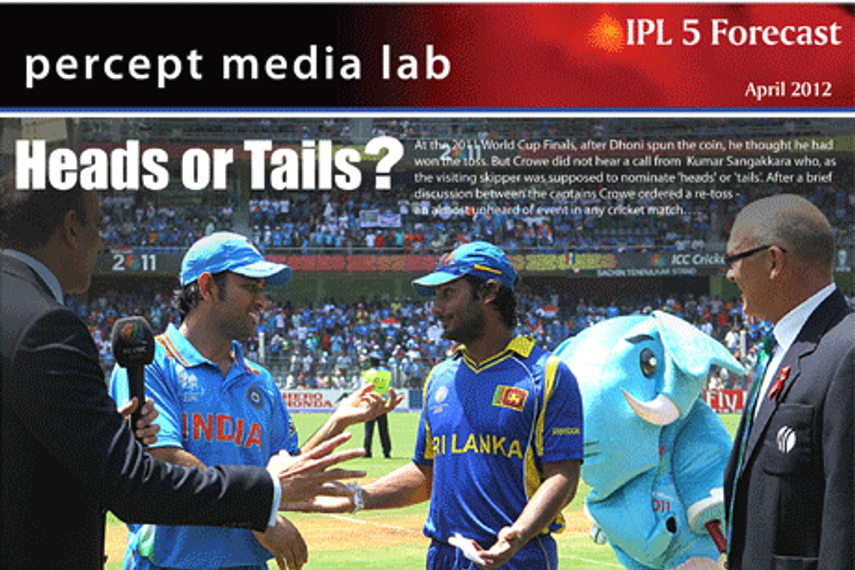
Percept has launched a new unit – Percept Media Lab - An independent cell of specialists from research, analytics and marcom planning sector to be led by Shripad Kulkarni, chief executive officer, Allied Media.
Percept Media Lab will delve into analytics, forecasts and future trends and concepts in the marcom space.
The first report to churn from the lab is the “Comprehensive Statistical Viewership Analysis of IPL 5.”
The next initiative of Percept Media Lab is an M3 project. At the heart of M3 is a 20,000 sample size consumer study, which will explore the path to purchase or P2P for 10 product categories in the context of marcom challenges and strategies. This study will measure the importance of key drivers for each of the categories and perception of top brands on each of those.
The high point of this study, claims the unit, will be the M3 model in collaboration with Pointlogic, globally popular in marcom planning and analytics that combines research, advanced mathematical modeling, and flexible software tools to deliver optimum message and media touch point combination for maximising market share. The scale of this project, says the company, is the first of its kind in the world.



.jpg&h=334&w=500&q=100&v=20250320&c=1)

.jpg&h=334&w=500&q=100&v=20250320&c=1)
.jpg&h=334&w=500&q=100&v=20250320&c=1)


.jpg&h=334&w=500&q=100&v=20250320&c=1)





.jpg&h=268&w=401&q=100&v=20250320&c=1)


.jpg&h=268&w=401&q=100&v=20250320&c=1)

